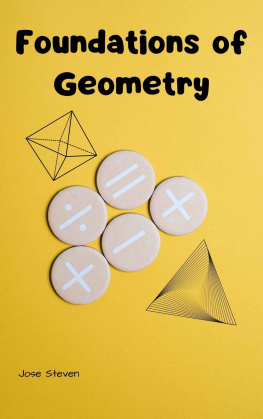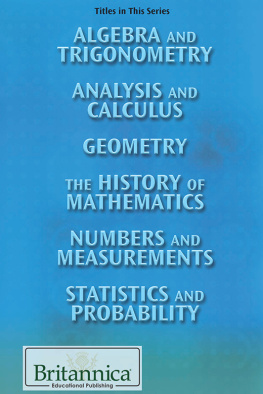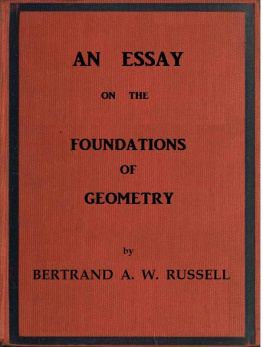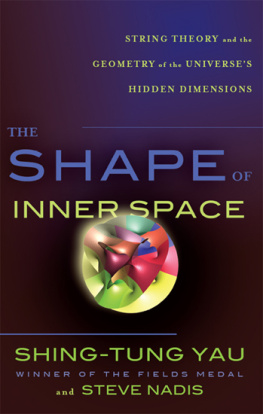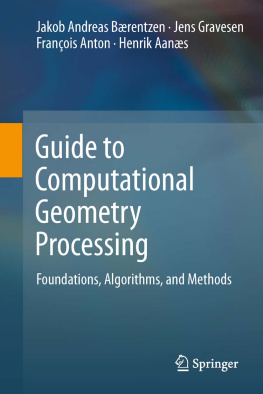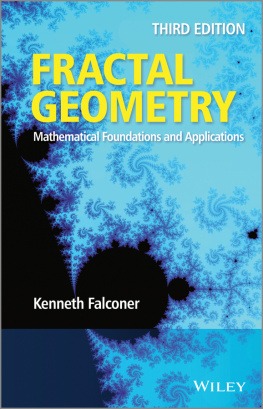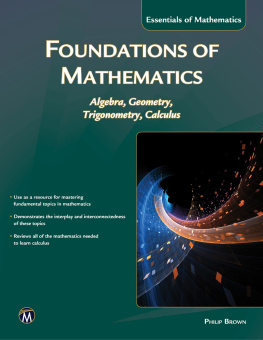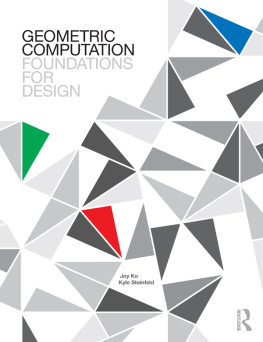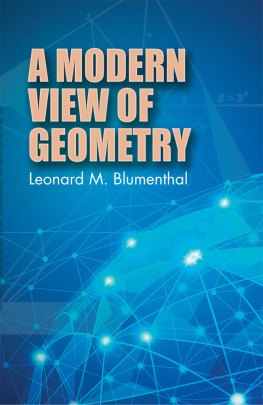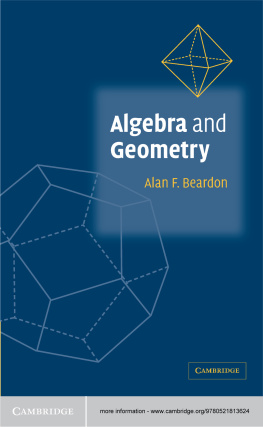Steven - Foundations of Geometry
Here you can read online Steven - Foundations of Geometry full text of the book (entire story) in english for free. Download pdf and epub, get meaning, cover and reviews about this ebook. year: 2022, publisher: UNKNOWN, genre: Children. Description of the work, (preface) as well as reviews are available. Best literature library LitArk.com created for fans of good reading and offers a wide selection of genres:
Romance novel
Science fiction
Adventure
Detective
Science
History
Home and family
Prose
Art
Politics
Computer
Non-fiction
Religion
Business
Children
Humor
Choose a favorite category and find really read worthwhile books. Enjoy immersion in the world of imagination, feel the emotions of the characters or learn something new for yourself, make an fascinating discovery.
Foundations of Geometry: summary, description and annotation
We offer to read an annotation, description, summary or preface (depends on what the author of the book "Foundations of Geometry" wrote himself). If you haven't found the necessary information about the book — write in the comments, we will try to find it.
Foundations of Geometry — read online for free the complete book (whole text) full work
Below is the text of the book, divided by pages. System saving the place of the last page read, allows you to conveniently read the book "Foundations of Geometry" online for free, without having to search again every time where you left off. Put a bookmark, and you can go to the page where you finished reading at any time.
Font size:
Interval:
Bookmark:
Contentsvii
xvi
1.1GEOMETRY BEFORE EUCLID
1.2THE LOGICAL STRUCTURE OF EUCLIDS ELEMENTS
1.3THE HISTORICAL SIGNIFICANCE OF EUCLIDS ELEMENTS
1.4A LOOK AT BOOK I OF THE ELEMENTS
1.5A CRITIQUE OF EUCLIDS ELEMENTS
1.6FINAL OBSERVATIONS ABOUT THE ELEMENTS
Our study of geometry begins with an examination of the historical origins ofthe axiomatic method in geometry. While the material in this chapter is not a mathematical prerequisite for what comes later, an appreciation of the historical roots ofaxiomatic thinking is essential to an understanding of why the foundations of geometryare systematized as they are.
1.1GEOMETRY BEFORE EUCLIDGeometry is an ancient subject. Its roots go back thousands of years and geometric ideasof one kind or another are found in nearly every human culture. The beauty of geometricpatterns is universally appreciated and often investigated in a systematic way. The studyof geometry as we know it emerged more than 4000 years ago in Mesopotamia, Egypt,India, and China.
Because the Nile River annuallyflooded vast areas of land and obliterated propertylines, surveying and measuring were important to the ancient Egyptians. This practicalinterest may have motivated their study of geometry. Egyptian geometry was mostlyan empirical science, consisting of many rule-of-thumb procedures that were arrived atthrough experimentation, observation, and trial and error. Formulas were approximateones that appeared to work, or at least gave answers that were close enough for practicalpurposes. But the ancient Egyptians were also aware of more general principles, such asspecial cases of the Pythagorean Theorem and formulas for volumes.
About 2500 years ago there was a profound change in the way geometry waspracticed: Greek mathematicians introduced abstraction, logical deduction, and proofinto geometry. They insisted that geometric results be based on logical reasoning fromfirst principles. In theory this made the results of geometry exact, certain, and undeniable,rather than just likely or approximate. It also took geometry out of the realm of everydayexperience and made it a subject that studies abstract entities. Since the purpose of this
course is to study the logical foundations of geometry, it is natural that we should startwith the geometry of the ancient Greeks.
The process of introducing logic into geometry apparently began with Thalesof Miletus around 600 B.C. and culminated in the work of Euclid of Alexandria inapproximately 300 B.C. Euclid is the most famous of the Greek geometers and his nameis still universally associated with the geometry that is studied in schools today. Mostof the ideas that are included in what we call Euclidean Geometry probably did notoriginate with Euclid himself; rather,Euclids contribution was to organize and presentthe results of Greek geometry in a logical and coherent way. He published his resultsin a series of thirteen books known as his Elements. We begin our study of geometryby examining those Elements because they set the agenda for geometry for the next twomillennia and more.
1.2THE LOGICAL STRUCTURE OF EUCLIDS ELEMENTSEuclids Elements are organized according to strict logical rules. Euclid begins each bookwith a list of definitions of the technical terms he will use in that book. In Book I henext states five postulates and five common notions. These are assumptions that aremeant to be accepted without proof. Both the postulates and common notions are basicstatements whose truth should be evident to any reasonable person. They are the startingpoint for what follows. Euclid recognized that it is not possible to prove everything,that he had to start somewhere, and he attempted to be clear about exactly what hisassumptions were.
Most ofEuclids postulates are simple statements of intuitively obvious and undeniable facts about space. For example, Postulate I asserts that it is possible to draw astraight line through any two given points. Postulate II says that a straight line segmentcan be extended to a longer segment. Postulate III states that it is possible to constructa circle with any given center and radius. Traditionally these first three postulates havebeen associated with the tools that are used to implement them on a piece of paper. Thefirst two postulates allow two different uses of a straight edge: A straight edge can be usedto draw a line segment connecting any two points or to extend a given line segment to alonger one. The third postulate affirms that a compass can be used to construct a circlewith a given center and radius. Thus thefirst three postulates simply permit the familiarstraightedge and compass constructions of high school geometry.
The fourth postulate asserts that all right angles are congruent (equal in Euclidsterminology). The fifth postulate makes a more subtle and complicated assertion abouttwo lines that are cut by a transversal. These last two postulates are the two technicalfacts about geometry that Euclid needs in his proofs.
The common notions are also intuitively obvious facts that Euclid plans to use inhis development of geometry. The difference between the common notions and thepostulates is that the common notions are not peculiar to geometry but are common toall branches of mathematics. They are everyday, common-sense assumptions. Most spellout properties of equality, at least as Euclid used the term equal.
The largest part of each Book of the Elements consists of propositions and proofs.These too are organized in a strict, logical progression. Thefirst proposition is proved usingonly the postulates, Proposition 2 is proved using only the postulates and Proposition 1,and so on. Thus the entire edifice is built on just the postulates and common notions;once these are granted, everything else follows logically and inevitably from them.Whatis astonishing is the number and variety of propositions that can be deduced from so fewassumptions.
Section 1.3The historical significance of Euclids Elements
 FIGURE 1.1: Euclids tools: a compass and a straightedge
FIGURE 1.1: Euclids tools: a compass and a straightedge1.3THE HISTORICAL SIGNIFICANCE OF EUCLIDS ELEMENTS
It is nearly impossible to overstate the importance of Euclids Elements in the developmentof mathematics and human culture generally. From the time they were written, theElements have been held up as the standard for the way in which careful thought oughtto be organized.They became the model for the development of all scientific andphilosophical theories. What was especially admired about Euclids work was the way inwhich he clearly laid out his assumptions and then used pure logic to deduce an incrediblyvaried and extensive set of conclusions from them.
Up until the twentieth century,Euclids Elements were the textbook from which allstudents learned both geometry and logic. Even today the geometry in school textbooksis presented in a way that is remarkably close to that of Euclid. Furthermore, much ofwhat mathematicians did during the next two thousand years centered around tying uploose ends left by Euclid. Countless mathematicians spent their careers trying to solveproblems that were raised by Greek geometers of antiquity and trying to improve onEuclids treatment of the foundations.
Most of the efforts at improvementfocused on Euclids fifth postulate. Eventhough the statement does not explicitlymention parallel lines, this postulate isusually referred to as Euclids parallelpostulate. It asserts that two lines thatare cut by a transversal must intersect onone side of the transversal if the interiorangles on that side of the transversal sumto less than two right angles. In particular,it proclaims that the condition on the angles formed by a transversal implies thatthe two given lines are not parallel. Thusit is really a statement about nonparallellines. As we shall see later, the postulatecan be reformulated in ways that make it
Font size:
Interval:
Bookmark:
Similar books «Foundations of Geometry»
Look at similar books to Foundations of Geometry. We have selected literature similar in name and meaning in the hope of providing readers with more options to find new, interesting, not yet read works.
Discussion, reviews of the book Foundations of Geometry and just readers' own opinions. Leave your comments, write what you think about the work, its meaning or the main characters. Specify what exactly you liked and what you didn't like, and why you think so.

